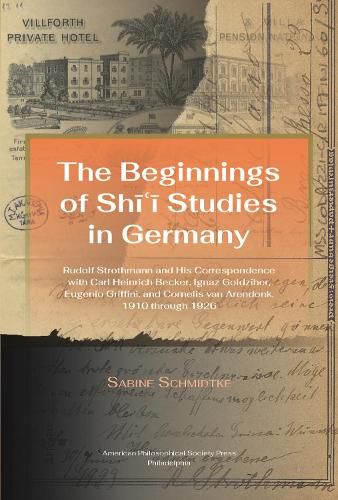Readings Newsletter
Become a Readings Member to make your shopping experience even easier.
Sign in or sign up for free!
You’re not far away from qualifying for FREE standard shipping within Australia
You’ve qualified for FREE standard shipping within Australia
The cart is loading…






Rudolf Strothmann (1877-1960) played a pioneering role in the scholarly exploration of Shi?i Islam in Western, especially German, scholarship. Between 1910 and 1923, he published many pathbreaking studies on the Zaydiyya, a sub-sect of Shia Islam that emerged in the eighth century, consulting primarily the recently purchased collections of Yemeni Zaydi manuscripts in Berlin. At the same time Strothmann delved into the literature of the most dominant form of Islam, known as Twelver Shi ?i. This endeavor culminated in his 1926 monograph, Die Zwoelfer-Schi ?a: Zwei religionsgeschichtliche Charakterbilder aus der Mongolenzeit, a portrait of two prominent seventh- and thirteenth-century Imami scholars-Na?ir al-Din al-?usi (d. 672/1274) and Ra?i al-Din ?Ali b. Musa Ibn ?awus (d. 664/1266). Strothmann's published work testifies to his erudition and versatility and continues to form an important point of departure for scholars working on different aspects of Shi ?ism in the early twenty-first century. In addition, his use of the manuscript treasures in the Berlin State Library between 1908 and 1926 reflects his evolution as a scholar over those years. Sabine Schmidtke examines these earlier decades of Strothmann's life and his development as a theologian and a scholar of Semitic languages and Islamic culture. Schmidtke also explores Strothman's correspondence with Carl Heinrich Beker, Ignaz Godziher, Eugenio Griffini, and Cornelis van Arendonk to shed further light on this period of his thought. The book includes an annotated edition of this correspondence, making it a valuable resource for further research.
$9.00 standard shipping within Australia
FREE standard shipping within Australia for orders over $100.00
Express & International shipping calculated at checkout
Rudolf Strothmann (1877-1960) played a pioneering role in the scholarly exploration of Shi?i Islam in Western, especially German, scholarship. Between 1910 and 1923, he published many pathbreaking studies on the Zaydiyya, a sub-sect of Shia Islam that emerged in the eighth century, consulting primarily the recently purchased collections of Yemeni Zaydi manuscripts in Berlin. At the same time Strothmann delved into the literature of the most dominant form of Islam, known as Twelver Shi ?i. This endeavor culminated in his 1926 monograph, Die Zwoelfer-Schi ?a: Zwei religionsgeschichtliche Charakterbilder aus der Mongolenzeit, a portrait of two prominent seventh- and thirteenth-century Imami scholars-Na?ir al-Din al-?usi (d. 672/1274) and Ra?i al-Din ?Ali b. Musa Ibn ?awus (d. 664/1266). Strothmann's published work testifies to his erudition and versatility and continues to form an important point of departure for scholars working on different aspects of Shi ?ism in the early twenty-first century. In addition, his use of the manuscript treasures in the Berlin State Library between 1908 and 1926 reflects his evolution as a scholar over those years. Sabine Schmidtke examines these earlier decades of Strothmann's life and his development as a theologian and a scholar of Semitic languages and Islamic culture. Schmidtke also explores Strothman's correspondence with Carl Heinrich Beker, Ignaz Godziher, Eugenio Griffini, and Cornelis van Arendonk to shed further light on this period of his thought. The book includes an annotated edition of this correspondence, making it a valuable resource for further research.